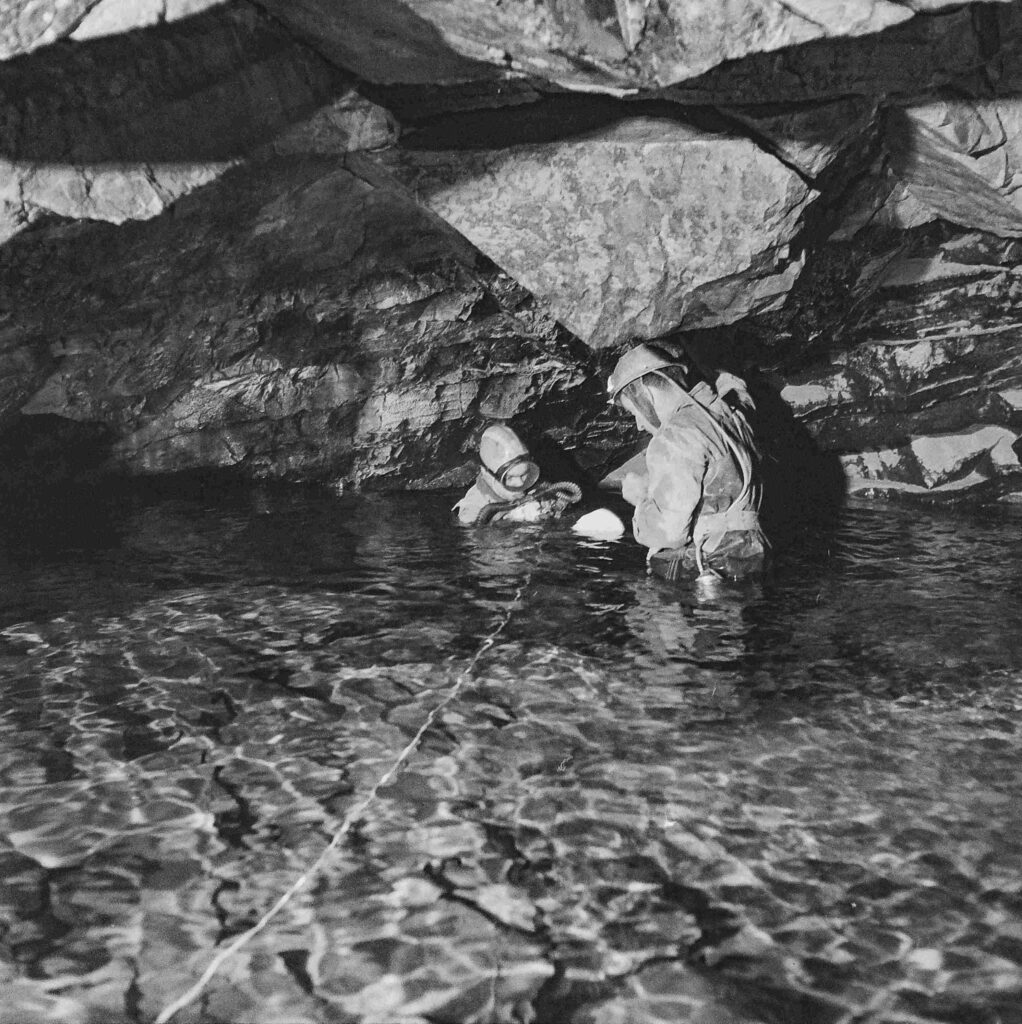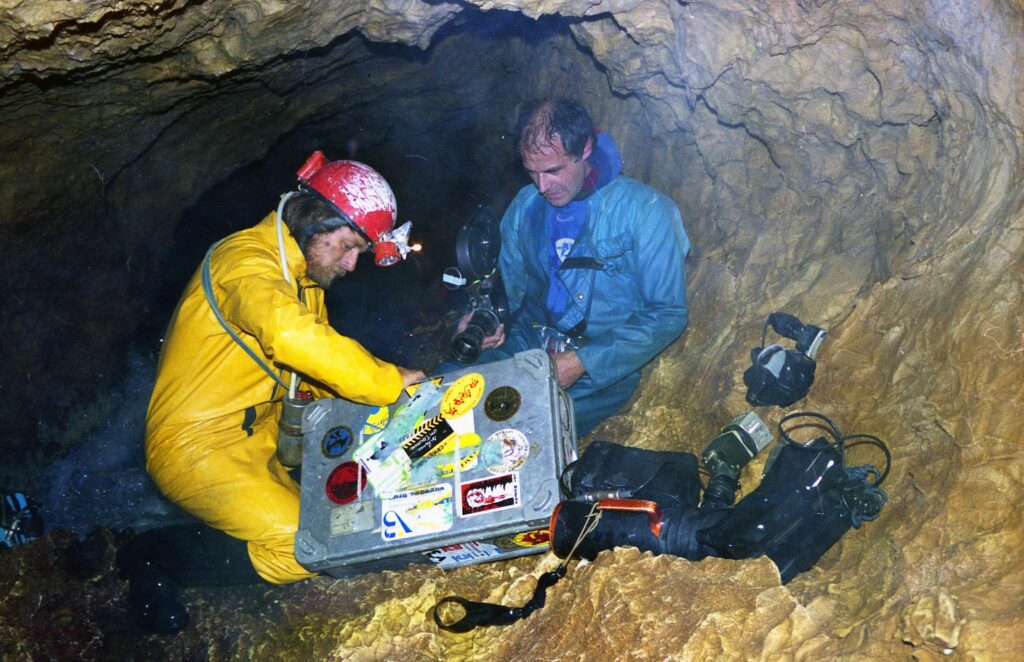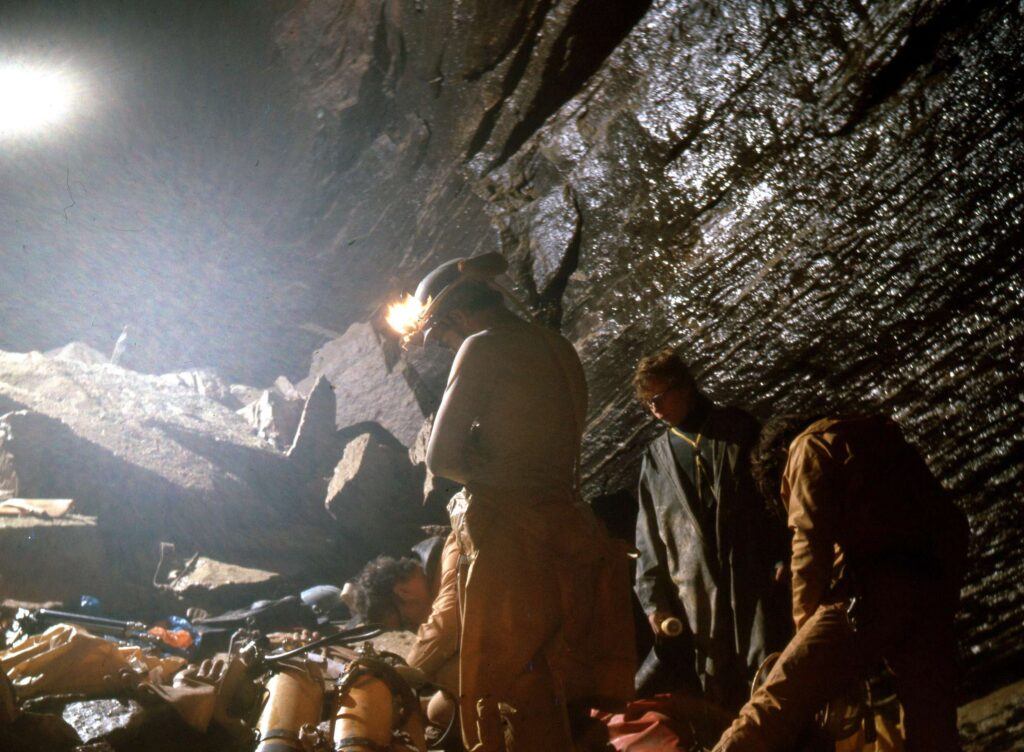Sassenage vats
The Sassenage vat network is a rising network (altitude 294 at the entrance). Part of it can be visited and you can also practice “accrogrotte”, a sort of underground via ferrata.

For cavers, the cave offers a variety of routes for beginners and experienced cavers alike, with magnificent galleries, shafts, shapes and walls.
Be careful, however, as some parts of the network may siphon off in the event of flooding. So it’s best to be cautious and keep an eye on the weather before setting off, and to know where you can fall back.
To date, the junction of the Berger chasm with the Sassenage vats has still not been achieved. Several attempts have been made to dive the siphons, but without succeeding in making the junction with the Berger chasm.
Bernard Bonnevalle and Michel Letrone made their first attempt in 1955 in the terminal siphon of the west gallery, which had been the terminal point in 1950. After crossing the 1st siphon by 25 metres, they opened up into a gallery almost 200 metres long, before coming up against a 2nd siphon with no hope of joining up with the Berger.
After several years, exploration of the vats was resumed.
In November 1961 (C.Gauthier, J.Maho. J.Lavigne, B.Refiena) made the major discovery of a passage at the bottom of the P.Lavigne shaft.
While Jean assures his teammates, the others descend. Scraping along the bottom of the shaft, R.Maho finds a passage in a sandy section. Their hunch for a suite at this location was right.
This chatière gives access to a torrent then called affluent de Saint Nizier because of its orientation, as well as to the rest of the network, including a large room, the largest of the vats, “la salle Gérard Carrel”..

With great difficulty, they gradually worked their way up this new network of waterfalls, shafts, siphons and other narrow passages.
After several outings, by the end of 1963 they will have progressed by 1 km.


Searches continue to find new passages on foot or by diving. The high altitude at the Saint Nizier tributary is 730m below the Charvets plateau (1045 m.), i.e. around 300 metres.
The development of the vats reaches more than 10 km.
Photos : Collection Jean Lavigne, Guy Prouin
